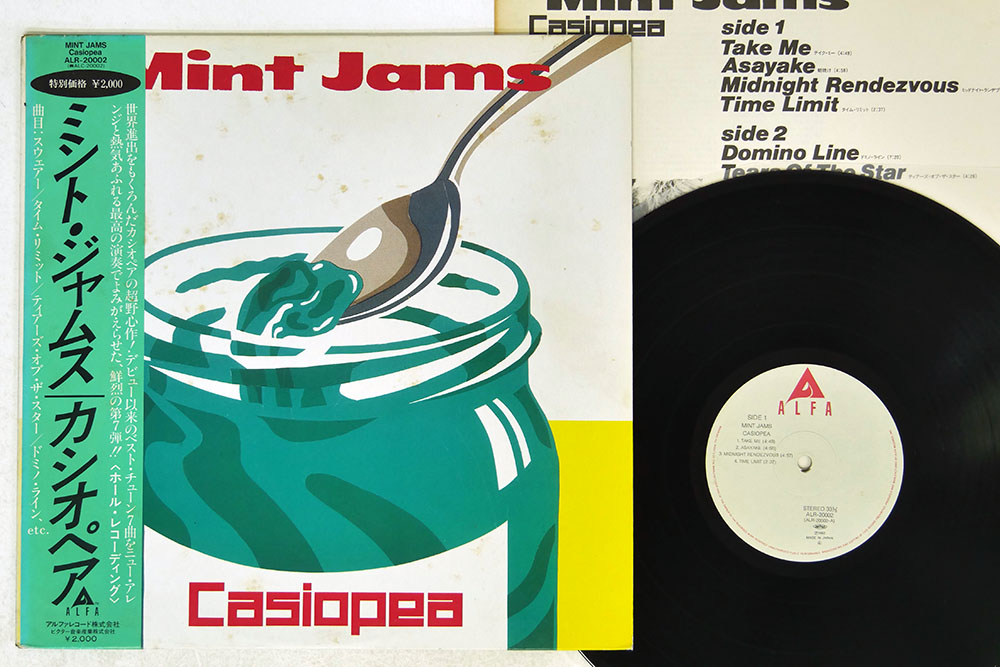
In December 1982, Casiopea released its fifth studio album Four by Four. It features two recent numbers and five long-standing favorites, including “Time Limit,” “Asayake,” and “Tears of the Star.” On the night of February 23-24, 1982, Casiopea recorded its second live album, Mint Jams, at Tokyo’s Chuo Kaikan Hall. Six months later, the band was back in Tokyo for the recording of Cross Point, once again with Mason at the console. It was recorded in Los Angeles that January and produced by guest-percussionist Harvey Mason. In 1981, Casiopea released its fourth studio album Eyes of the Mind.
#Casiopea album cover plus
It features five Noro originals, including “Life Game” and “Eyes of Mind,” plus two cuts by Jimbo and one (“Reflections of You”) by Mukaiya. Also in 1980, the band released its third studio album Make Up City. It features six extended favorites from their then-setlist, including three numbers exclusive to this release. In February 1980, Akira Jimbo assumed the drum seat and Casiopea recorded Thunder Live at ABC Hall in Shiba, Tokyo. In December 1979, the band appeared on the album Spiral Fusion by keyboardist Tatsuya Koguma. It features nine originals, including “Flying,” “Olion,” and “Mighty Mouse,” the last of those with horn arrangements by Jun Fukamachi. Later that same year, Casiopea issued its second album Super Flight. David Sanborn and the Brecker Brothers appear on select tracks.Ĭasiopea’s second album Super Flight (1979)

It features eight Noro originals, including “Swallow,” “Space Road,” “Far Away,” and “Tears of the Star.” The lineup is rounded here by drummer Takashi Sasaki, bassist Tetsuo Sakurai, and keyboadist/vibist Minoru Mukaiya. Members: Issei Noro (guitar), Tetsuo Sakurai (bass, 1976-89), Hidehiko Koike (keyboards, 1976-77), Takashi Sasaki (drums, 1977-80), Minoru Mukaiya (keyboards, 1977-2006), Akira Jimbo (drums, 1980-89), 鳴瀬喜博 Ĭasiopea issued its self-titled debut album in early 1979 on Alfa.

His one prior credit is an appearance on the 1974 eponymous album by the Franken Misty Brothers Band. 1, 1957), the one constant member across Casiopea’s forty-plus-year existence. The band was formed in 1976 by guitarist/composer Issei Noro (b. Further albums have appeared at a yearly rate in the decades since, mostly on Pioneer and Pony Canyon. wiki-commons:Special:FilePath/CasiopeaSelfTitleAlbumCover.Casiopea are a Japanese jazz-funk band that released approximately two albums per year on Alfa between 19.Tunes like Black Joke are part of the multiple performances and variances along Casiopea's career. The album includes the participation of some notable contemporary jazz players such as David Sanborn on the saxophone, giving a special touch to Issei Noro's compositions. Recorded between December 1978 and March 1979 in Japan, "Casiopea" is Casiopea's self-titled debut album. The cover depicts two racecars racing each other on a raceway. Casiopea is the debut album of the jazz fusion group Casiopea which was recorded between 1978-1979 and released later that year.Studio "A", Shibaura, Tokyo from December 1978 to March 1979.wiki-commons:Special:FilePath/CasiopeaSelfTitleAlbumCover.jpg?width=300.
#Casiopea album cover series
The cars featured on the album cover are based on Can Am cars running in the japanese Fuji Grand Champion series at the end of the seventies, most likely a Lola T290 Mazda and a March 74s from the 1978 & 1979 championships. This album was recorded on LP in 1979 as ALR-6017 and years later in 1986 on CD under the 32XA-104 catalog numbers, being the first editions on both LP and CD.



 0 kommentar(er)
0 kommentar(er)
